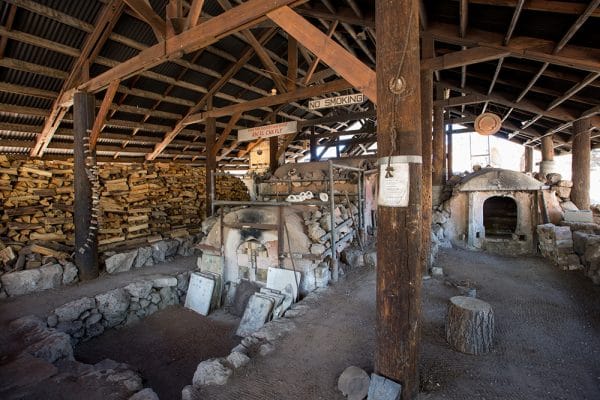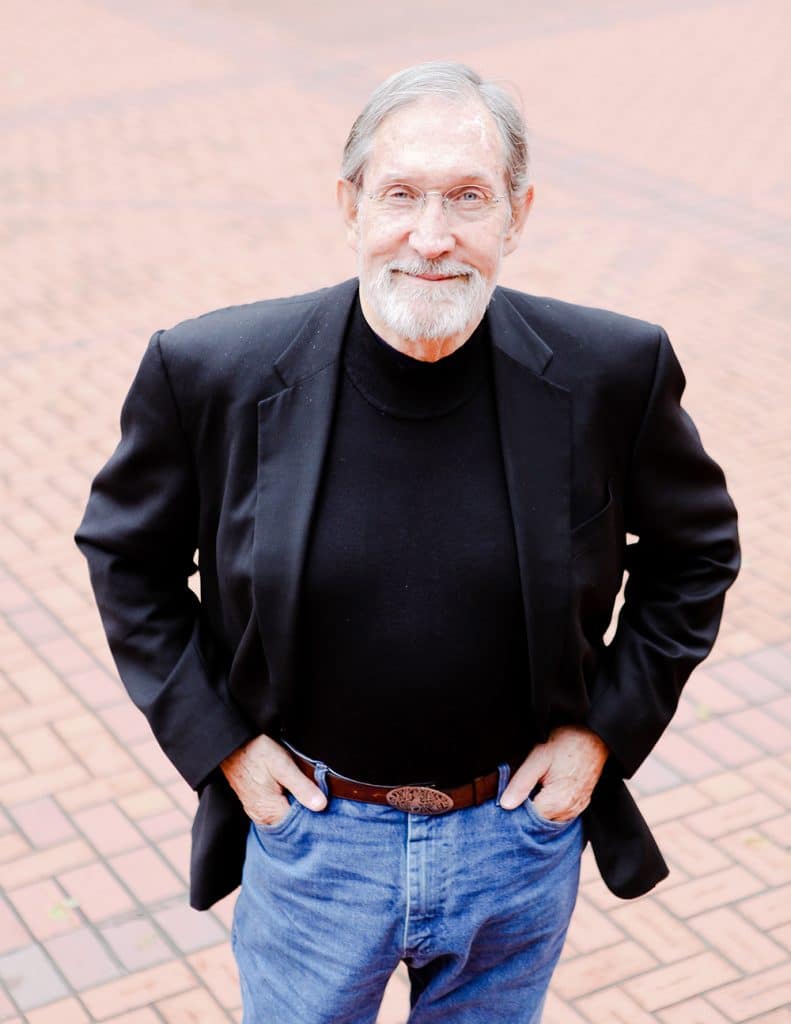Doug Macy was not an artist, or a Northern Arizona University alum. Yet he was passionate about two things: collecting art and NAU—he had his son to thank for both.
Aaron Macy attended NAU in the late 1990s and pursued a degree in ceramics. It was during those four undergraduate years that he fell in love with Flagstaff, creative expression and his alma mater—he was especially drawn to the woodfired kilns on campus. The Macy house was filled with Aaron’s creations, and consequently, Doug also acquired a strong appreciation for ceramic art.
After graduation, Aaron moved to Ohio to pursue a masters of fine arts in ceramics. At the start of his second year of grad school, he became ill and ultimately lost his battle with leukemia. He died at the age of 29.
Aaron’s ashes were scattered around Cottonwood Canyon in Utah—one of his favorite places. For many summers thereafter, Doug would make the 800-mile journey from Portland to the canyon to visit his son’s resting place. After spending a couple days in Utah, he would make his way to northern Arizona to spend time at Aaron’s other favorite place—NAU’s Ceramics Complex.
“It was my first summer teaching at NAU when I saw this man wandering around the wood kiln facility looking really sad,” ceramics professor Jason Hess said. “So I went down and introduced myself and said, ‘why don’t you come on up to the shop?’ And so, he did. We hung out and had tea. That’s when our friendship started.”
Doug and Hess would grow to be great friends. They talked about art, and Doug shared stories about his son.

“Aaron’s death was devastating for him—no parent should ever have to experience losing a child,” Hess said. “And I think it gave him some comfort to connect with a place that was so pivotal to Aaron, and to be involved with our program.”
Doug was eventually asked to chair NAU’s College of Arts and Letters Advisory Council—he set the agenda for the committee and played a big role in raising money for the college. Though it was the biannual council meetings that kept him coming back to campus, he stayed involved in any way he could. When he was in town, he visited with ceramic students and participated in student critiques. He also put his landscape architecture career to use.
From the placement, pathway and patio of the Japanese teahouse to the construction of the ceramics clay-mixing building, Doug was instrumental in designing and implementing multiple elements on the grounds of the ceramics complex, including a memorial wall covered in woodfired ceramic tile in honor of Aaron.
“He was a real advocate for ceramics, and helped in every way he could—never asking for anything in return.”
Hess and Doug’s friendship would last 18 years, until Doug died in 2017. Though he was gone, Doug made sure his son’s legacy would live on.
He devoted his life to collecting art. Over the course of two decades, he collected more than 200 pieces, mostly comprised of ceramics, but also paintings, drawings, prints, photographs and sculpture.
“It’s mainly focused on artists from the Pacific Northwest,” Hess said. “It’s a very high-caliber collection that includes pivotal ceramic artists like Peter Voulkos, Jun Keneko, Patti Warashina and Don Reitz. He also collected a number of pieces from me and from faculty here at NAU. And whenever he came through Flagstaff, he would always buy something, or a couple things, from students.”
The collection is now known as the Aaron M. Macy Memorial Collection.
“He didn’t have an heir,” Hess said. “So, he didn’t know what to do with his money. He wanted to give some to NAU, but he also wanted to put it into something that would live on, and that was this collection and endowment.”
The collection, worth more than $650,000, was willed to NAU. In addition, Doug put more than $400,000 into the Aaron M. Macy Memorial Award fund and NAU’s Tozan Kiln fund. He even provided funds to have display cases built at various locations around campus to house the collection.

“The idea was that these display cases would be placed in highly visible areas so that students could enjoy the artwork. A portion of the collection would be on display at all times around campus, then rotated out every couple of years.”
Hess said that Doug made sure all of the money he donated would directly benefit students: should a student want to go to China or India to study art, they could; if someone couldn’t afford art supplies or needed money to do other research, they would be funded. A portion of the money also will go to bringing visiting artists to campus each semester.
“It was really important to him that students have opportunities.”
Because of the Macys, the opportunities seem endless.
“Doug was so concerned about making sure Aaron’s legacy would live on, that in doing so, he also created a legacy of his own.”
Carly Banks | NAU Communications
(928) 523-5582 | carly.banks@nau.edu




